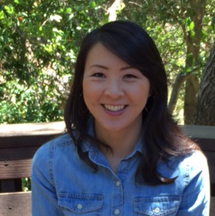 Giving Tweens and Teens Freedom with Responsibility
Giving Tweens and Teens Freedom with Responsibility
“Wash the plate not because it is dirty, nor because you were told to wash it, but because you love the person who will use it next.” – Saint Teresa of Calcutta
Wanting Freedoms
When my children were little, they couldn’t wait to tie their shoelaces by themselves. They couldn’t wait to brush their teeth by themselves. And they couldn’t wait to put on their clothes by themselves. Now that they are both in middle school, they can’t wait to use their own credit card, get their driver’s license, own their own car, and live in their own house all by themselves – all of which are out of reach for them at the moment! So how does the transition from childhood to adulthood happen? What should a parent do during the tween and teen years before their kids become a young adult at age 18?
Learning Independent Life Skills
In our family, we use the tween and teen years to teach our kids independent life skills as a responsibility out of deference to others. Sure, we could teach their kids to complete tasks out of necessity, or to follow direct instruction, but ultimately, we want to teach our children that true freedom comes when you choose to do a menial task that is motivated by love. To help work towards that goal, my children are assigned individual and shared household tasks based on ability by age. We want our kids to be grateful participants and productive contributors to their community as adults. Since the family is the most basic unit of society, the best practice for freedom with responsibility starts at home.
Managing Financial Responsibilities
In terms of financial freedom, we adhered to conservative spending habits and taught the girls to follow these guidelines: save 70%, spend 20%, and give 10% of their money to charity. We put their savings in a high yield children’s account so they can learn about compound interest. As parents, we always bought them items they needed and sometimes wanted, but we let them spend 20% so they can splurge on purchases for items they enjoy. So why give 10% to charity? When children are young, they easily accept that there are others in need and we should give some of our money for other’s benefit and for the greater good. We have given to the Salvation Army, participated in canned food drives, and donated funds to animal preservation organizations. Later in life, our kids will have to pay taxes, and they will approach taxes with the same mentality that it is for others – money goes to schools, money goes to maintaining the roads, money goes to upkeeping the library! Of course, they will vote on measures as to how that money is spent, but they will have adopted the habit of giving for the greater good.
Coordinating Household Chores
To help our middle school aged daughters learn responsible, independent living, they share a bedroom, share the bathroom, tidy up the kitchen together after meals, and take care of their laundry together. By design, they have to learn how to communicate effectively with one another, cooperate to complete household tasks together, and coordinate schedules to get their personal things done in the limited space they share. These life skills will help them when they have a roommate in college, a housemate as a young adult, or to live with their spouse as adults!
Gaining the Right to Drive
Once they have mastered managing their money wisely and living together harmoniously in a shared space, we can begin the conversation about driving a car. In a young person’s mind, of course, the ability to drive means freedom. However, this privilege also comes with a greater responsibility of learning basic car maintenance skills, abiding by the rules of the road, and driving defensively for the safety of your passengers – all of which are others-oriented.
Friends, what other life skills to do you teach your tween and teen?
Jaime
Copyright © 2021 by GenParenting

Discovering the joy of teaching while in high school, Jaime pursued her B.A. in English at Santa Clara University. She also received a teaching credential and a M.A. in Education Administration from Santa Clara University. Jaime taught English Language Arts at Rancho Middle School, motivating and inspiring young people to become effective communicators and contributors in their community. From being a Middle School English Language Arts/English Language Development teacher to becoming a stay-at home mom, Jaime is an education consultant who presents literacy workshops. Her workshops focus on a combination of her ten years of teaching expertise with tried-and-true experiences that she uses with her own children. Jaime is also a Teacher Consultant with the San Jose Area Writing Project. Jaime’s mission is to share effective reading and writing strategies with families to encourage literacy.

